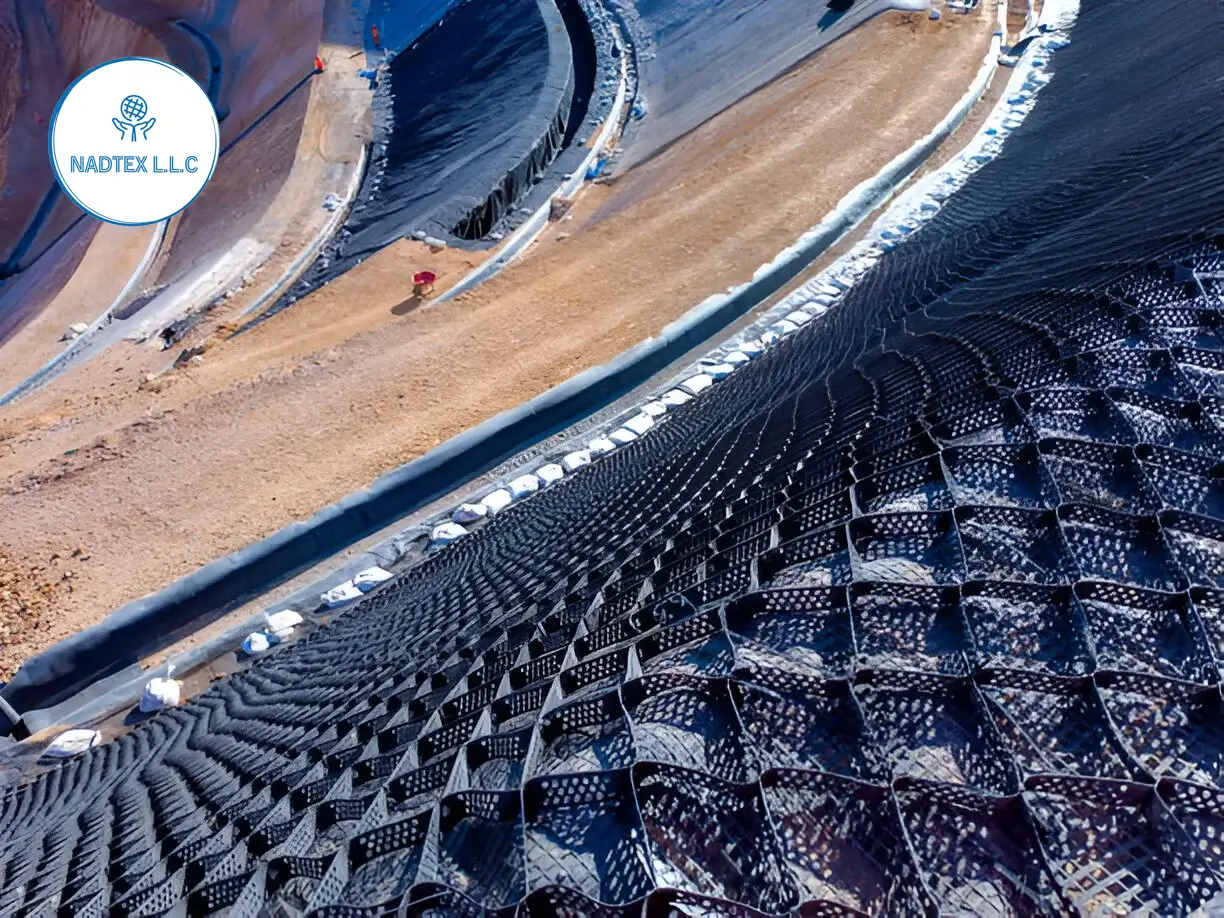
What is a Geocell Load Support Systems? A Geocell load support systems is a cutting-edge solution that utilizes three-dimensional cellular...
NADTEX LLC is a leading provider of high-quality construction materials in the MENA Region.
We specialize in supplying essential products for civil, mechanical, and landscape applications. Our commitment to excellence drives us to deliver innovative solutions that meet the diverse needs of our clients.
Shaping a sustainable future through innovative geo materials.
Delivering exceptional geo materials solutions for a better tomorrow.
Quality, innovation, and customer satisfaction.
Exceeding expectations through excellence and innovation.
Our goal is to establish NADTEX L.L.C as a trusted partner in the construction industry, renowned for delivering high-quality, cost-effective services that consistently exceed our clients' expectations. We strive to build long-lasting relationships based on trust, reliability, and a commitment to excellence.
NADTEX LLC offers a comprehensive range of high-quality construction products designed to meet the diverse needs of your projects. From civil and utility products to mechanical components and advanced landscape solutions, our offerings are engineered to enhance efficiency, durability, and safety.

Benefit from our in-depth knowledge and tailored solutions.
Expert evaluation of your project's entire lifecycle.
Customized solutions for your specific needs.
Harnessing innovation for optimal results.
Precision and quality in every installation.
A comprehensive approach to your project's success.
NADTEX LLC is your trusted partner for comprehensive construction solutions in the MENA Region. With a focus on civil, mechanical, road safety, and, landscape materials supply, we deliver exceptional results that exceed expectations.

Ready to elevate your construction project?
Partner with NADTEX LLC, your trusted provider of comprehensive construction solutions. Benefit from our expertise, innovation, and commitment to quality.
Contact us today to discuss your specific needs and request a quote.
Discover how Nadtex LLC innovative solutions and expert guidance can transform your construction projects.

What is a Geocell Load Support Systems? A Geocell load support systems is a cutting-edge solution that utilizes three-dimensional cellular...
NADTEX LLC – Your trusted partner for civil,
mechanical, road safety, and materials supply solutions in the UAE and GCC.
© 2024 Copyright Reserved
WhatsApp us